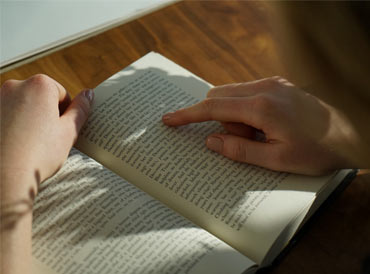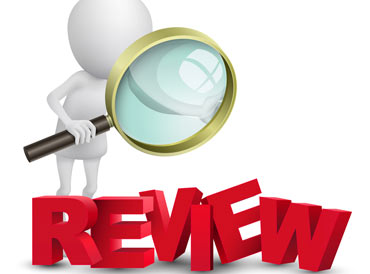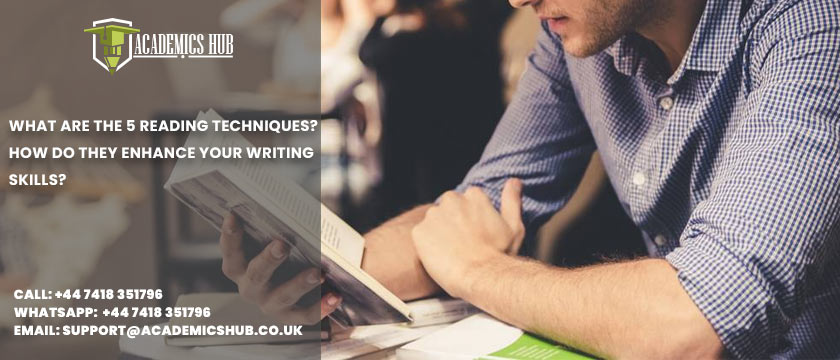Every level requires you to read, and read a lot! Reading efficiently and effectively is a critical professional ability, whether you’re looking at a project plan, press release, web page, trade journal email, or any other sort of text. One cannot learn the art of reading and hence comprehending without understanding efficient reading techniques. Reading techniques help you understand the information better. For example, students are required to read research papers, news items, textbooks, web pages, lecture slides, and teacher directives. Knowing the best reading techniques can literally put you ahead of the competition with all that reading.
Effective reading skills lead to efficient writing skills. If one knows the art of reading, he can definitely master the art of writing. For this, it is important to understand the five reading techniques and apply them in order to improve your academic skills.
Those who do not possess good writing skills seek affordable writing service to meet their requirements. Some professionals offer affordable writing service to students and make their academic burden less hectic for them.
Reading Techniques
Reading is not as simple and easy as it looks. It requires a lot of attention, tactics and comprehension. Only then one can truly understand the text in its truest means. A lot of time is spent reading when studying, especially at higher levels. Academic reading should not be viewed as a passive activity but as an active process that leads to learning progress. Reading for learning involves a conscious effort to discover correlations, comprehend viewpoints, conduct research, and apply what you’ve learned. These strategies are known as reading techniques. The process of reading grows more difficult as we improve our skills. New terminology and more sophisticated sentence patterns are introduced.
Reading techniques are different approaches to reading that you can use to improve your reading skills. The approaches assist you in learning faster, comprehending what you read more precisely, and retaining what you read. The reading techniques help in academic growth by enhancing an individual’s academic skills, including writing skills.
The Five Reading Techniques and Their Impact on Your Writing Skills
- Active Reading

The process of actively engaging with the material while reading is known as active reading and is among the five major reading techniques for making reading more active. As you read, underline or highlight relevant phrases. When you review the text again, this might be a great method to remind yourself of what you thought was significant. Consider going through one paragraph at a time before highlighting or underlining something. This will allow you to pick out the most important points. Alternatively, you may find that reading an entire chapter first to acquire a sense of the main concepts is preferable to going back and highlighting key points that support the argument.
It is much similar to how you read précis. To grab the whole gist, you read it actively. This active engagement leads to detailed examination and ultimately helps you understand the writing style and aids in improving your writing skills as well.
Active reading involves much more! Make marginal notes to highlight questions or ideas. You may do this in e-books and hard copies or use post-it notes if you don’t want to mark the book. This method allows you to better engage with the text, making what you read more relevant. Break up your reading time by writing down summaries of what you’ve read. You can do this either without referring to the text or by drawing on the text. This will help you concentrate on the most crucial concepts. Pose questions to yourself about the author’s intended meaning or the effect they wanted to achieve. This is referred to as critical reading. This makes you learn more about the metamorphic sides of writing and also helps you understand and learn better writing skills.
- Technique SQ3R
Survey, Question, Read, Recite, and Review is the abbreviation SQ3R. This is one of the important reading techniques and is excellent for retention and comprehension.
Survey
Preparing your mind to receive the material is the first step in the SQ3R approach. Surveying entails gaining a fast overview of the entire content.
Read the topic, subheadings, and sentences as you skim through the book. At the end of each chapter and book, read the summaries. Try to make assumptions about what the author will say next in the story. Write these ideas down on paper, then go through them to gain a general idea.
There are several methods for surveying reading content, including:
- Reading the first paragraph
- Examining the sections, headings, and subheadings
- Observing the images or graphs
- Reading the synopsis
- Researching the study questions
Question

This step involves preparing questions to which you will discover answers when you understand the text. Make the titles of paragraphs into questions.
Questions can be readily created using headers and subheadings. For example, if a chapter’s headline is “Consuming liquor before the gym,” you can ask yourself, “Does drinking alcohol before a workout have any negative effects?” Such questions will automatically take you to the specific objective of the text. It’ll make you pay greater attention to what you’re reading as a result.
Read
Reading as the third phase of the SQ3R paradigm is more productive than reading straight through the material. This is because you’ll already have a concept of what you’ll be learning and what questions you’ll be asking.
Make notes as you read to aid you in this process. Also, highlight the most significant topics after reading a section.
Recite
This is where you respond to the questions you posed before beginning to read. As you assimilate what you’ve read, make sense of it, and receive answers to your questions. Reciting ultimately enhances comprehension.
Review

Simply make mental notes of what you’ve read to see how much you can recall. Thus, this level is all about retaining information. Examine your questions, responses, notes, and book to evaluate how well you remembered them. Finish by visualizing the entire scenario.
You should write the review just after you finish reading and again later. Do not wait more than 24 hours after reading to review for best retention. If you wait more than 24 hours before a review, you risk losing most of what you’ve learned.
- Skimming
Skimming, often known as acquiring the ‘gist’ of a text, is one of the most useful reading techniques in which you skim through the information to find what you’re searching for. When you are already aware of the general idea of the text, this is the ideal option. You can also skim through the material before diving deeper. This method of reading is utilized to grasp the gist of the entire text. This approach is commonly used when reading a newspaper or magazine. It can be used to gain a sneak peek at a passage before reading it in-depth or to refresh understanding after reading it in depth.
It’s more about speed than comprehension when it comes to reading a large amount of text. This does not imply that skimming is the same as speed reading. While speed reading allows you to absorb a lot of information rapidly, skimming allows you to sort through information quickly. You read the intricacies when speed reading, but you pass over them when skimming.
When all you need is to acquire the primary idea, though, skimming is an invaluable reading method. It’s a good idea to “survey” a piece of writing before diving in to read it thoroughly. When you need to review what you’ve already read, skimming can help. You move your eyes swiftly over the material when skimming a previous read to help refresh your memory. Skimming helps you improve writing skills as it defines the right way to grab the reader’s attention quickly.
- Scanning
Scanning is one of the important reading techniques that help retain information better and improves academic skills. In its technique, scanning is comparable to skimming. It also entails skimming a large section of text without regard for comprehension. The distinction between scanning and skimming is deliberate. While skimming is used to gain a general overview of the material, scanning is used to locate specific information. Scanning is a reading skill that will come in handy in a variety of situations. Reviewing reading material to refresh understanding of what was read is one of these circumstances. When reviewing, you scan the text fast for keywords or important phrases that will help you remember things. Anyone who has sought to find specific information or a subject in a text has unconsciously employed this strategy.
Skimming is useful for:
- Reading product or service reviews
- Going through a speech at the last minute
- Doing some fast research
- And reviewing before a test
Skimming can help you save time by letting you know the main ideas without having to read the entire book. It will save your time if you need to go back over the subject again later.
- Detailed Reading
Detailed reading is a practice that entails reading and studying each word attentively in order to gain a better grasp of the topic. To get correct information from a source, detailed reading is used. Skimming is a common way to begin detailed reading. To begin, you skim the material to get a sense of what it is about. Then you read it thoroughly. You must seek up the meaning of new words or phrases when undertaking a detailed reading. For improved comprehension, you must also piece words together. When reading research articles, studies, and literary works, you employ this strategy. This technique involves both skimming and active reading. You skim through a text first, then read it thoroughly.
Detailed reading is undoubtedly one of the most time-taking and labor-intensive reading techniques. In this technique, every single word is studied in detail and analyzed for its significance by the reader. To obtain a deeper understanding of a sentence, it takes time and patience to piece together the meanings of words in a sentence, but in certain cases, this is the best technique. It improves writing skills mainly for literature, scientific and poetic writings, as it entails detailed research and study of a text from multiple standpoints.
Final Thoughts
Different reading techniques can be used depending on your reading requirements. SQ3R, skimming, scanning, active reading, and detailed reading are the five major reading techniques. You can improve your academic skills by using these reading techniques.
Knowing these reading techniques, on the other hand, is merely the beginning of becoming a skilled reader who reads quickly, comprehends what is read, and can recall it quickly. To increase reading speed, comprehension, and retention, you may need to pay even more attention to your reading style and brain activity. Undoubtedly, for academic growth, one needs to focus on the five major reading techniques and apply them in order to excel in academic life.
